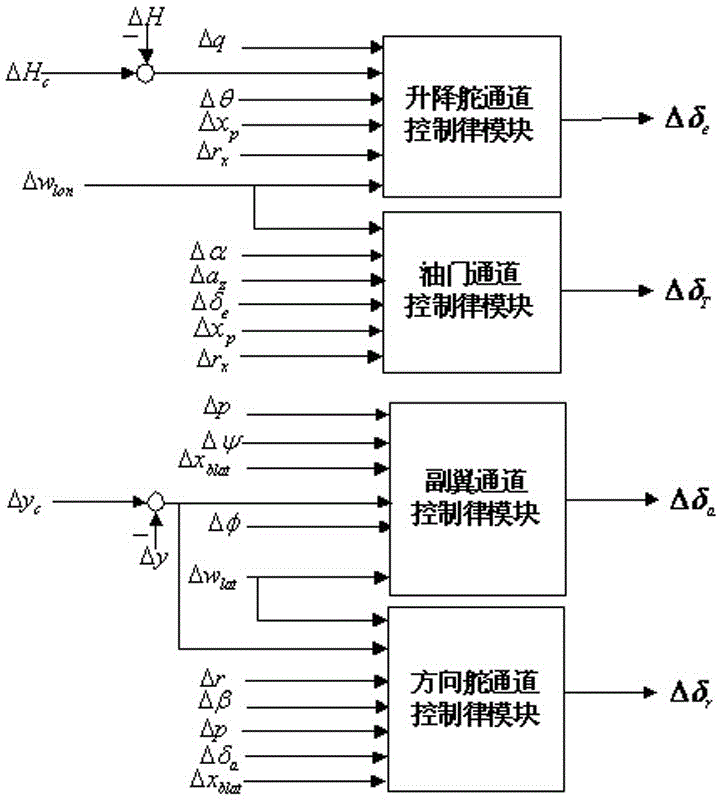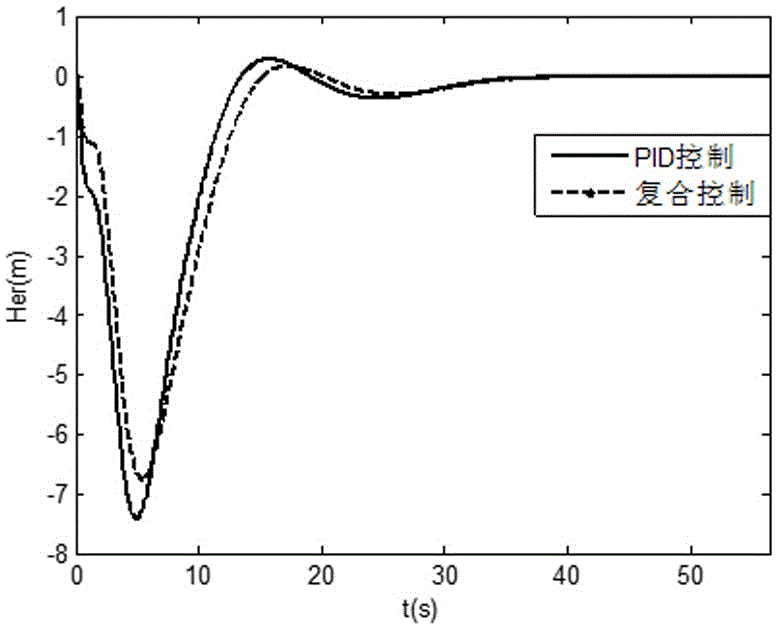A Composite Control Method for Automatic Landing of Carrier Aircraft Including Ship Tail Airflow Compensation
A compound control and automatic landing technology, applied in the field of flight control
- Summary
- Abstract
- Description
- Claims
- Application Information
AI Technical Summary
Problems solved by technology
Method used
Image
Examples
Embodiment Construction
[0066] The technical solution of the present invention will be described in detail below in conjunction with the accompanying drawings.
[0067] The invention provides a compound control method for automatic landing of a carrier-based aircraft including ship-tail airflow compensation, which realizes tracking and landing of the carrier-based aircraft along the glideslope track after the carrier-based aircraft enters the glide phase, and at the same time can effectively suppress and eliminate the lateral deviation, making the ship The carrier aircraft maintains lateral stability, and starts to suppress the ship's wake 12.5 seconds before landing to ensure the success rate and safety of the carrier aircraft's automatic landing.
[0068] In the present invention, the compound control method for automatic landing of carrier-based aircraft including ship tail airflow compensation, the principle structure is as follows figure 1 As shown, it is mainly realized through the composite co...
PUM
 Login to View More
Login to View More Abstract
Description
Claims
Application Information
 Login to View More
Login to View More - R&D
- Intellectual Property
- Life Sciences
- Materials
- Tech Scout
- Unparalleled Data Quality
- Higher Quality Content
- 60% Fewer Hallucinations
Browse by: Latest US Patents, China's latest patents, Technical Efficacy Thesaurus, Application Domain, Technology Topic, Popular Technical Reports.
© 2025 PatSnap. All rights reserved.Legal|Privacy policy|Modern Slavery Act Transparency Statement|Sitemap|About US| Contact US: help@patsnap.com



